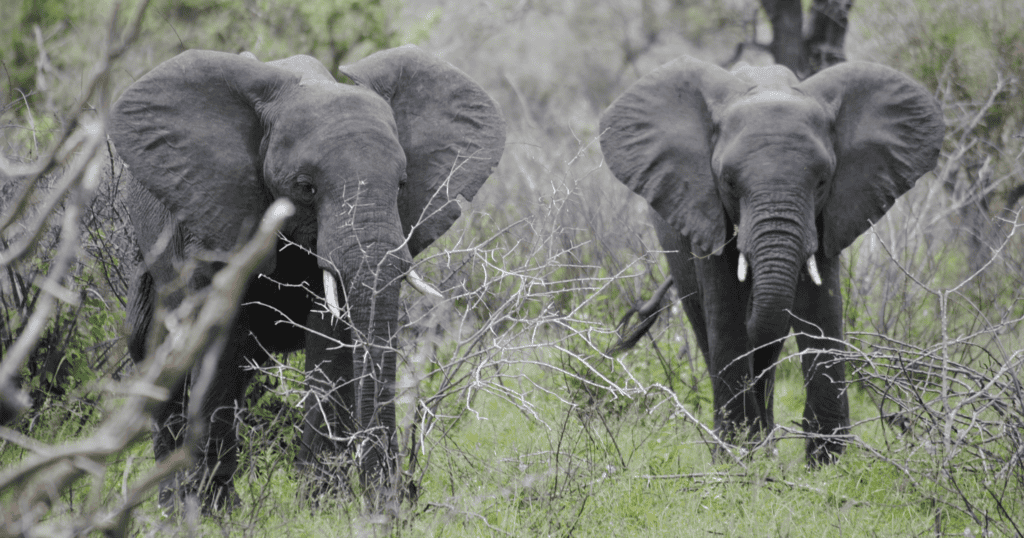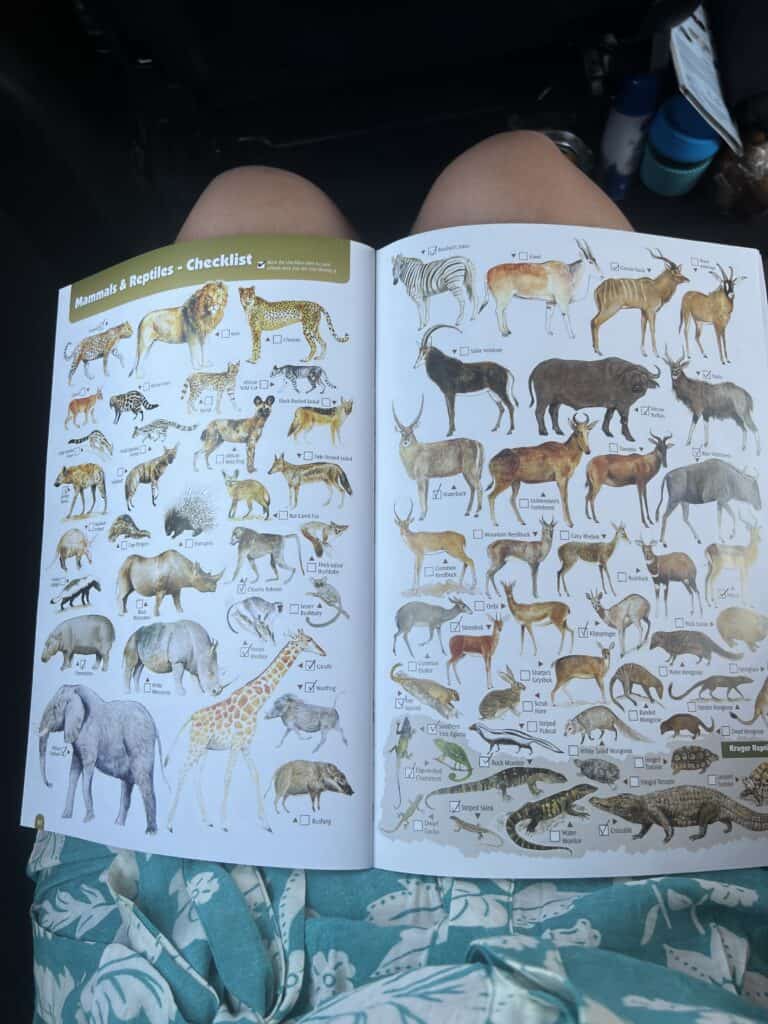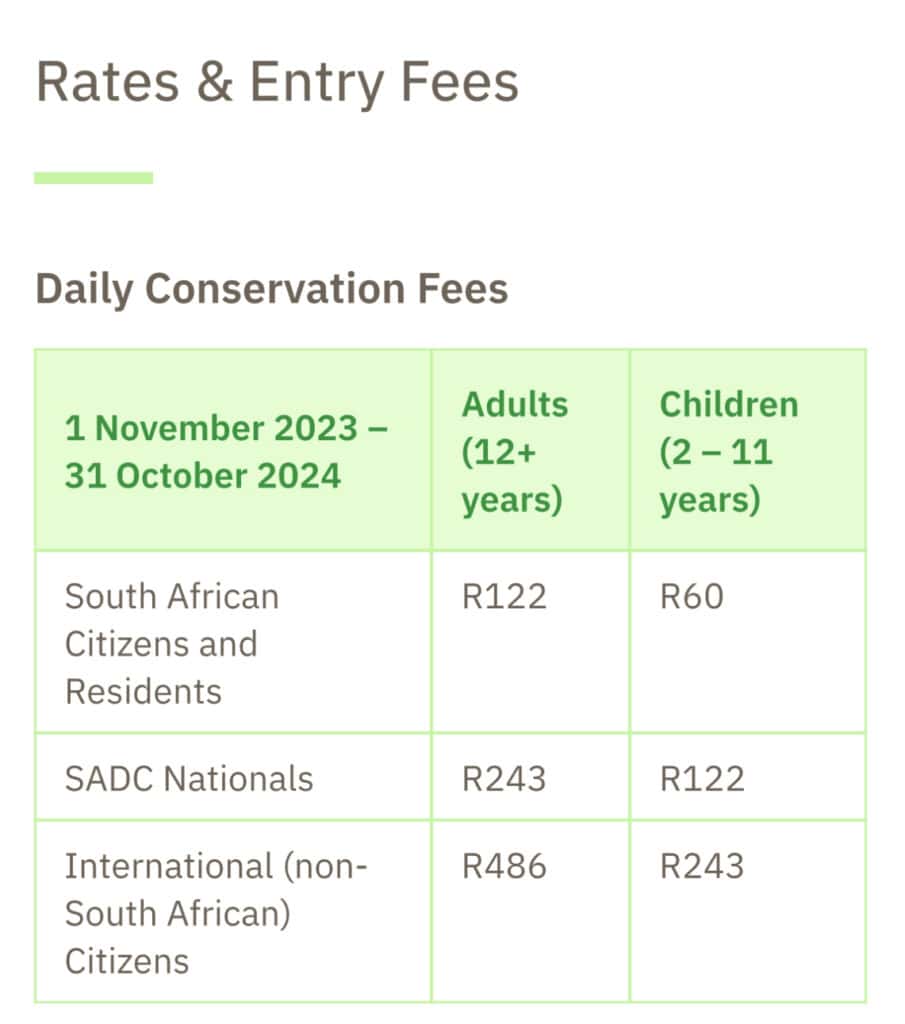We’ve saved the Kruger National Park for the very end of our three months in South Africa, and I’m so happy we did! Gotta save the best for last, right? We’re going with Chesney’s family who live here and visit the park regularly. They’ve done all the organizing, which has been a real blessing for us after our several months of travelling, AND their insider knowledge about where to stay and what to do is invaluable. Here’s what every day of our week in the park looked like.
Getting to the Kruger National Park
It’s 4:30am and we’re on our way to the airport, flying across the country to the Kruger National Park. It’s a bit of a mission because we have to take two flights and drive two hours to get there. We’re flying from Cape Town to Johannesburg, catching another flight to Nelspruit, and then driving to Skukuza, the main camp within the park.
The second flight into Nelspruit is on one of those little planes with capacity for like, 50 people and takes less than an hour. It’s possible to drive to the park from Johannesburg but that takes around five hours. Considering all the driving we’re going to be doing in the park, adding an extra 10 hours does not appeal.
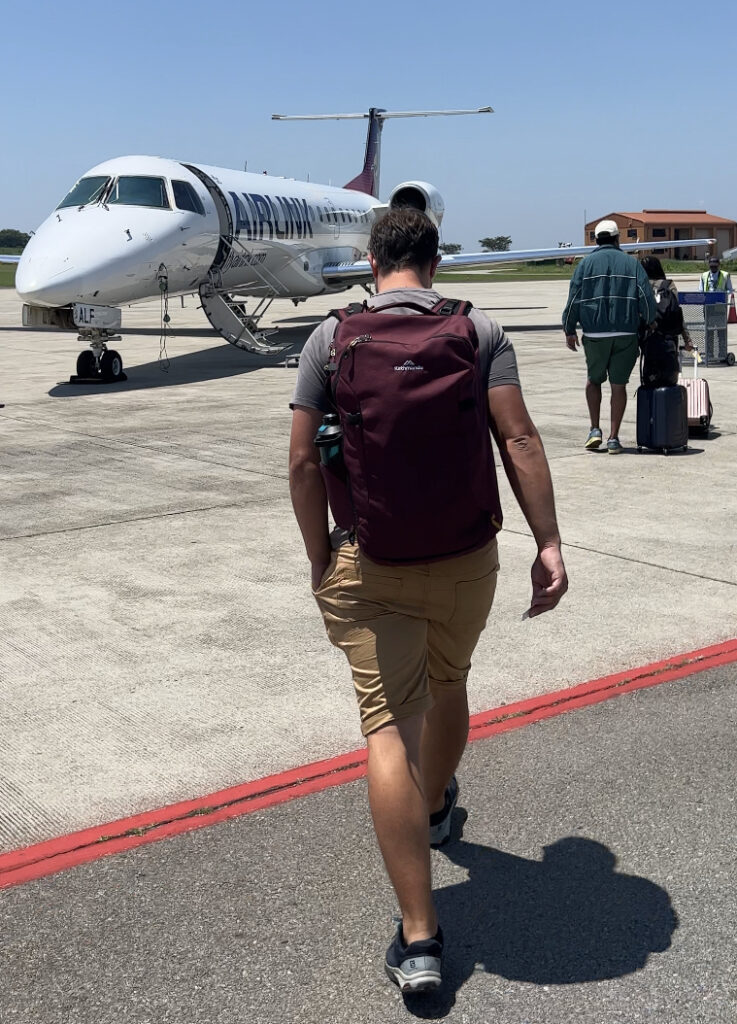
Day 1 in the Kruger National Park
We pick up groceries in a town called Hazyview. There are some shops in the park, but they offer less variety and the prices skyrocket. And we obviously weren’t going to cart a week’s worth of food from Cape Town.
Literally the moment we pass through the gate into the park, we see a nyala — a type of African antelope. Off to a great start!
South African National Parks (SANParks) has two different prices for parks around the country, depending on whether you have South African or foreign ID. It’s usually about 5x more for foreigners. For example, locals pay $2 to visit the famous Boulders Beach, while foreigners pay $10 (USD). I have mixed feelings about this, because obviously I’d rather pay the local rate, lol, but it’s nice that locals can visit the attractions in their backyards at a more affordable price.
The difference between $2 and $10 to see penguins isn’t devastating, but the price difference at the Kruger Park is a little more significant. The local rate is $6, while international visitors pay $26 — per day! It’s peanuts when you consider it’s a once in a lifetime experience, but still.
We consider trying to sneak past at the local rate with Chesney putting on his best South African accent and me just like, definitely not speaking at all, but in the end it’s just easier to pay the conservation fee and avoid getting into trouble before we’ve even seen anything more than an antelope. We fill out a form listing our nationalities and passport numbers, but they never actually check our documents — not even the actual South Africans. We totally could have gotten away with it! At least it’s a “conservation fee.”
We pick up one of these map & guide books, which features an epic illustrated checklist of every animal we might find in the park.
I am literally (not figuratively) obsessed.
On our drive from the gate to our campground (maybe like 15 minutes) a huge herd of elephants crosses the road right in front of us! I knew this is what the week would have in store, but it’s still pretty surreal to see them directly outside my window like this.
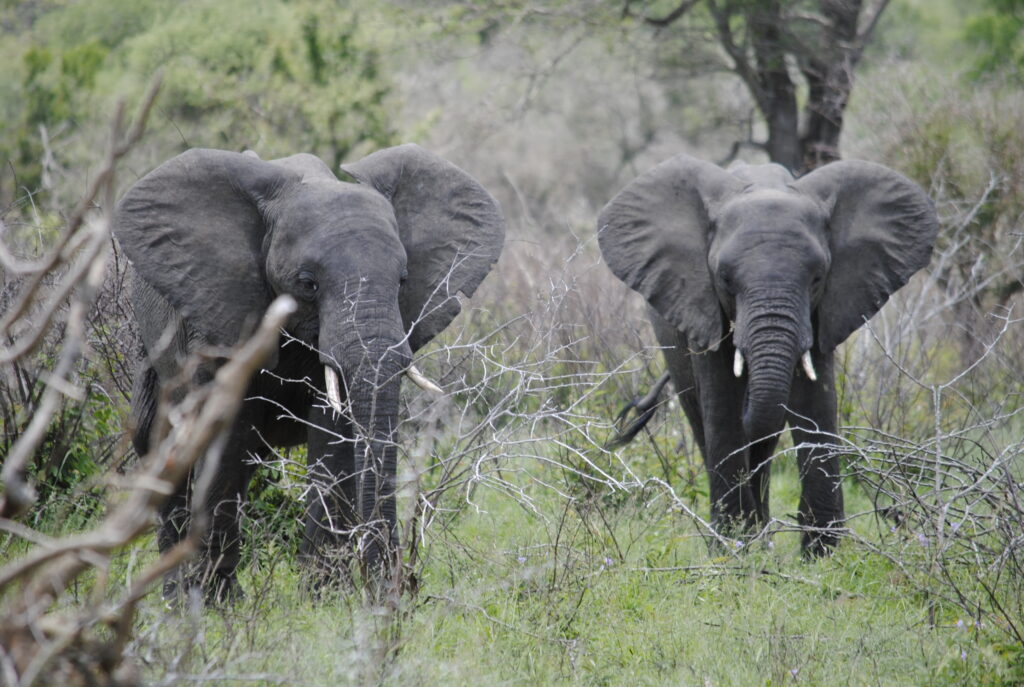
At the campground check-in, they hand us a map of where to find our huts and we're all at opposite corners of the camp.
Not a huge drama, but not exactly convenient, either. We have all our food in the same bags and stuff, you know? It’s just one night, but Kimmi, Chesney’s aunt and our master planner, asks if there’s any way they can shuffle some stuff around so we can be at least a little closer. Chesney and I go on a stroll with his uncle Gav while Kimmi and Lor, his grandmother, stay behind while the parks people see if they can switch up our huts.
Unable to give us three huts grouped together, apparently they were able to upgrade one to a bigger suite. Kimmi keeps saying they offered it because Lor seemed so upset. (She didn’t, but whatever works to get that upgrade!) It’s only one night, so definitely not a drama that we’ll be across the campground, but I’m keen to see what Lor’s upgraded room looks like.
Following the map, we pull down a driveway to a long building that looks like a little apartment block. Kimmi shouts “Surprise they upgraded us and this is actually for all of us!”
Iconic.
It’s four bedroom units with ensuite bathrooms, and a two-story living room & kitchen space in an adjacent building on the same property. It’s massive, but still has the safari charm with a thatched roof. Not only is huge, it’s also on the river. Chesney goes to investigate the view and calls out to come see. There’s a little family of hippos playing in the river, beneath an old bridge that used to carry train passengers through the park from the 1920s-70s.
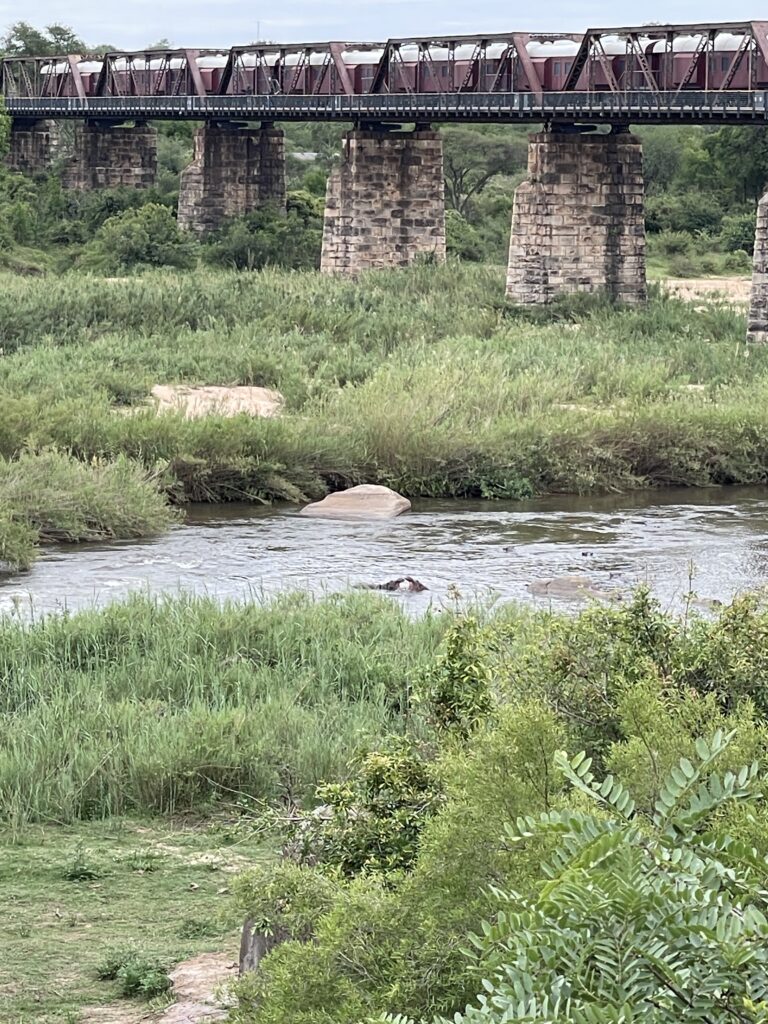

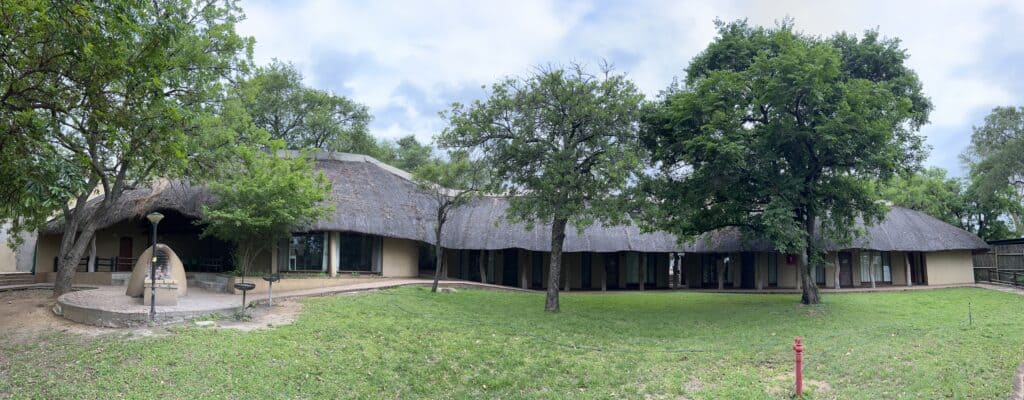
Our lodge at the Skukuza rest camp in the Kruger National Park
Day 2 in the Kruger National Park
We’re leaving our stunning river-side mansion in Skukuza to go north and deeper into the park for the next few nights. The cool thing about the Kruger National Park is that it’s all self-drive. You don’t need to go with a tour group or even a guide — you can see the whole thing on your own terms.
TBH I’m surprised by how few rules there are, and how no one even gave us a run down before they let us in lol. No one said, “Hey btw don’t pet the lions please.” Which of course seems like common sense, but we’re all aware of how little common sense the average human has, are we not?
Occasionally you’re allowed to alight from your vehicle, but it doesn’t seem like there’s any rhyme or reason as to when and where.
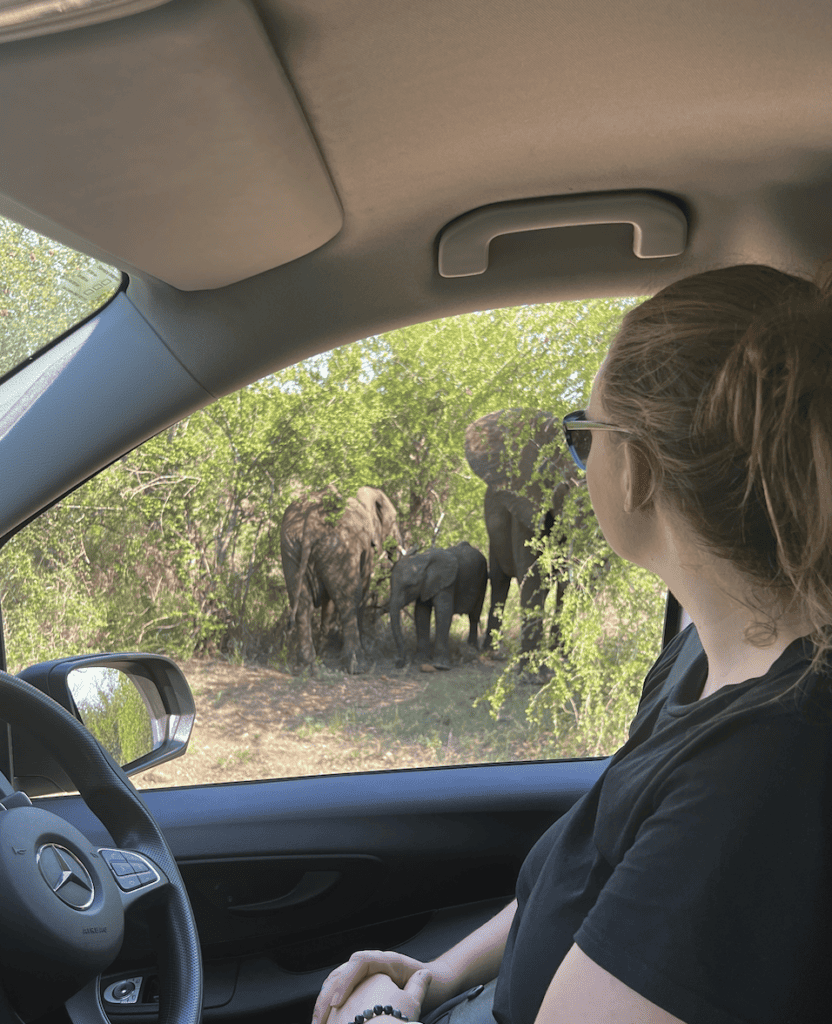
See how close the animals are?!
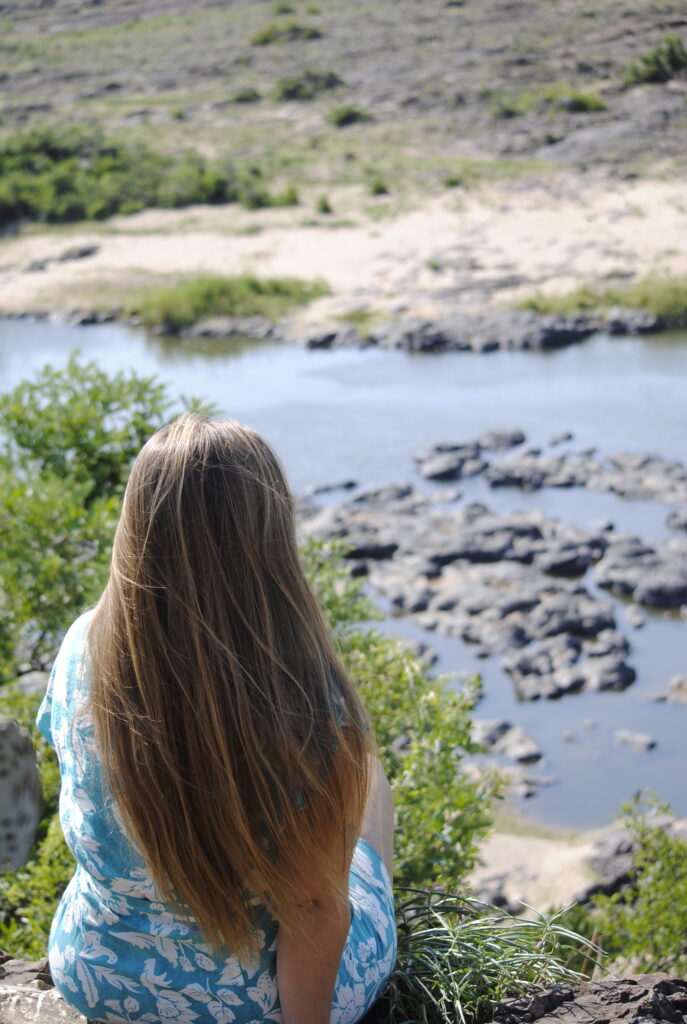
One of the spots we could get out of the car
Anyway, I love it. The only real rule is that we can’t go off the roads, which have a speed limit of 50 kms/hr. The main roads are paved but there are lots of little loops (ie. side quests) to do, or longer, unpaved backroads to choose from that will get us to our same destination. Our next camp is called Olifants, which — you guessed it — means elephants in Afrikaans.
There are quite a few other cars on the road and, occasionally, people roll down their windows to ask if we’ve seen anything cool or to let us know when they’ve just had a good sighting nearby. One dude stops to tell us he’s just seen a leopard (!!!!!!) but he’s all grumpy about it because there’s a lineup of cars waiting to catch a glimpse. They’re famously elusive and it’s normal to visit the Kruger National Park and never see one, so if we have a shot of ticking it off the checklist, I’m not precious about the circumstances in which we find it.
We follow his directions to take a side road, and we don’t have to look too hard for too long, because a group of about 8 cars is blocking the road — this must be the place.
Approaching slowly and as silently as possible, we pull up to a small tree just a few meters from the road where we can see a bit of movement among the branches. With the help of some binoculars, we can see a leopard tearing away at its lunch – an unlucky impala whose head is now dangling from the tree. The circle of life, baby.
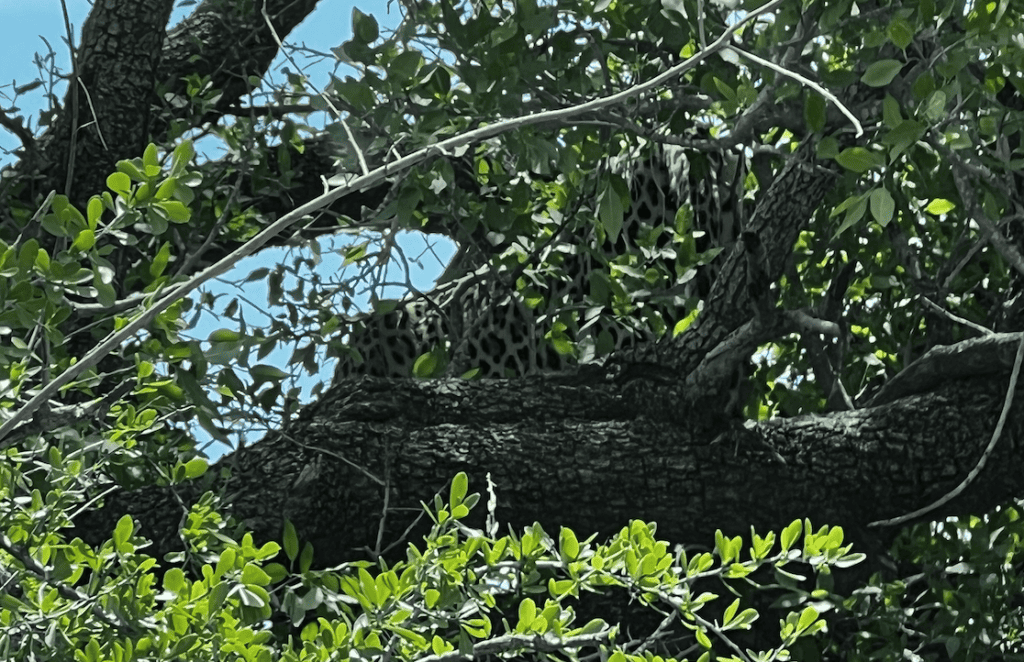
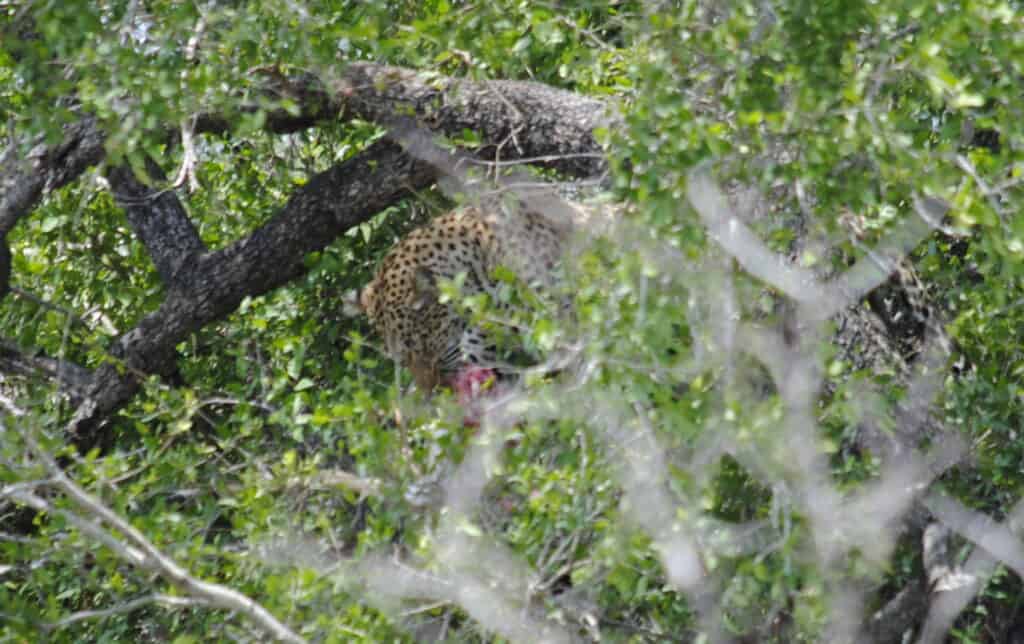
We also see more herds of elephants, giraffes snacking by the road, and a mama hyena and her two pups.
We’ve only been able to get these incredibly high quality photos because Chesney’s grandmother let us commandeer her fancy camera throughout the trip. Thanks Lorraine!
Ches has been the main photographer — I’m still an iphonographer.
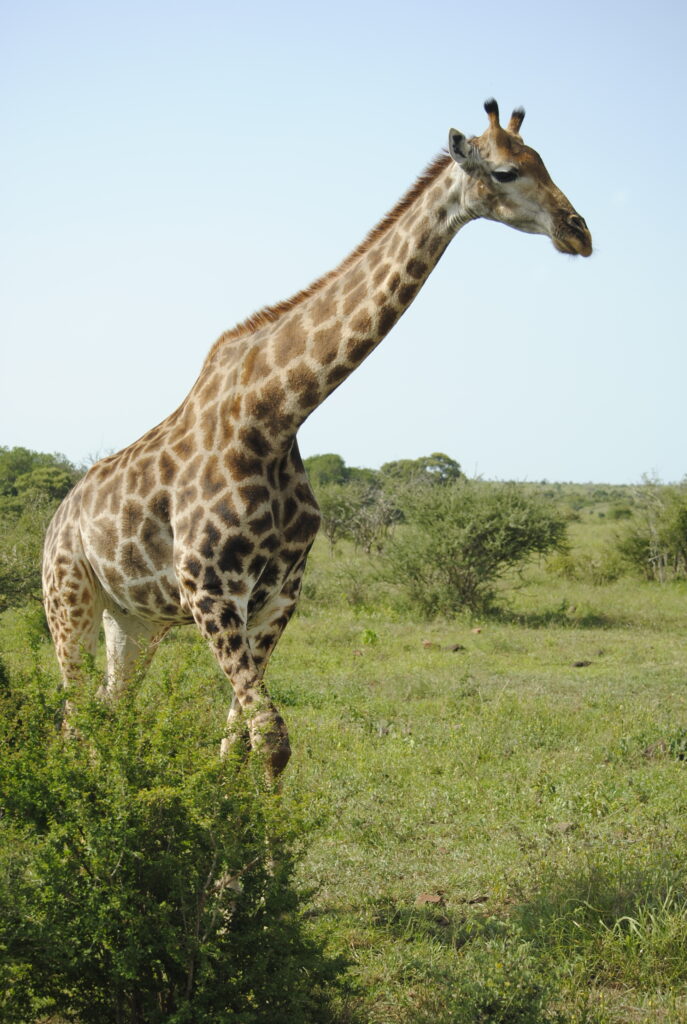
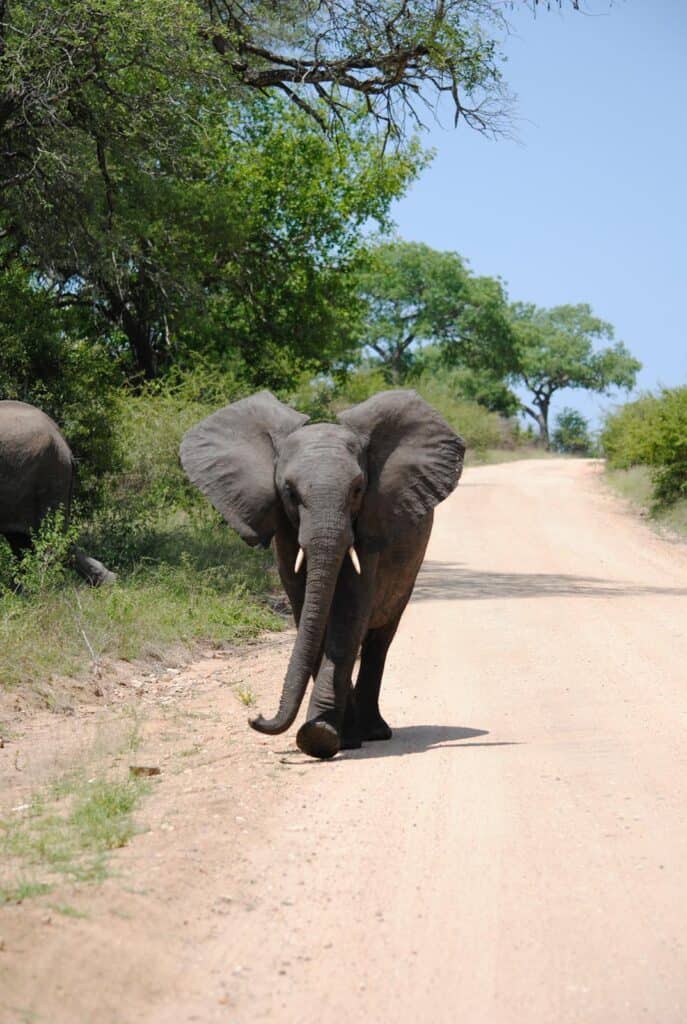
Respectfully, grown up hyenas are *not* pretty. But the babies are!
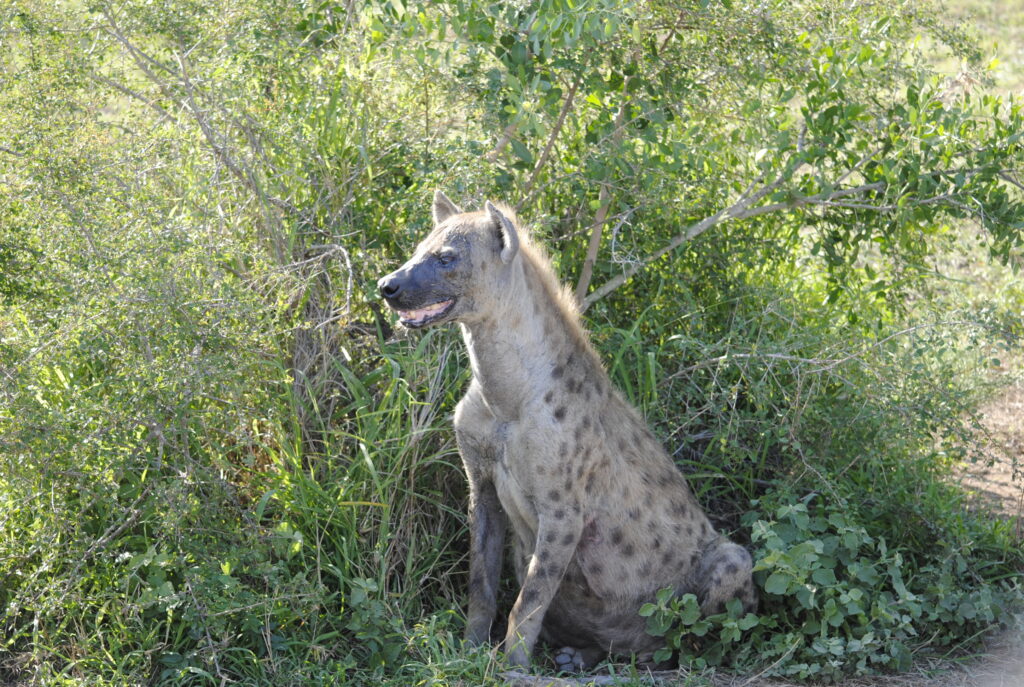
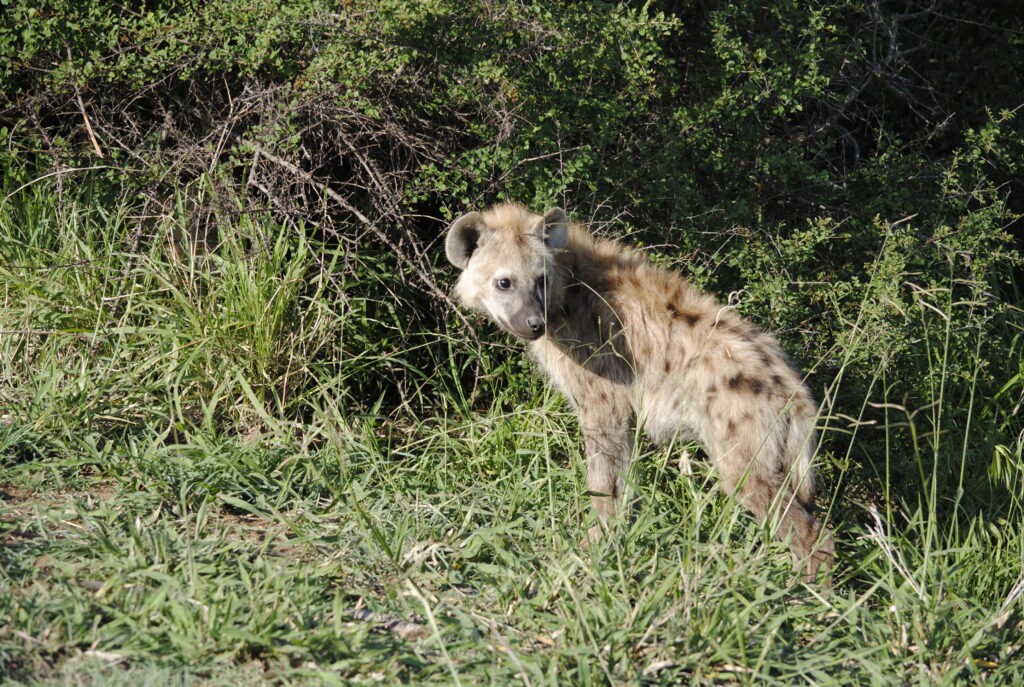
We’re staying at Olifants for three nights and this time they’ve given us three huts all next to each other – no upgrade. BUT who needs an upgrade when the cabins are so cute?! They’re called rondavels, a traditional style of African hut with a thatch roof. Each has an ensuite bathroom and outdoor kitchen, complete with a braai (bbq) and a full fridge behind a metal cage — to keep the baboons out.
These campgrounds all have one or two restaurants on site, and the one here at Olifants sits up on a hill and looks out over a river. We make it just in time to catch the sunset, and for these crazy little bats to come flying out of their bat box.
What is a bat box? I'm so happy you asked.
Think of a bird house, but imagine like 100 bats all crammed in there. As soon as the sun goes down they start to wake up and come flooding out into the night at the same time. The box is right next to the restaurant’s patio, so for about a minute after sundown everyone is dodging live bats during dinner.
Here’s my Insta vid of the event.
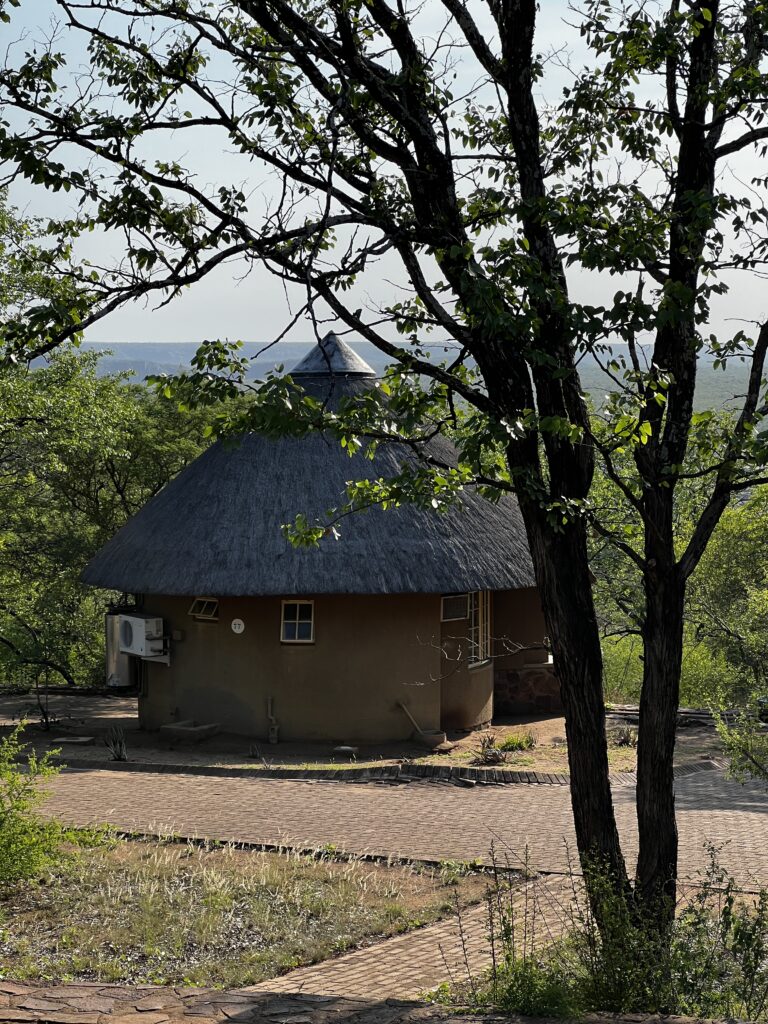
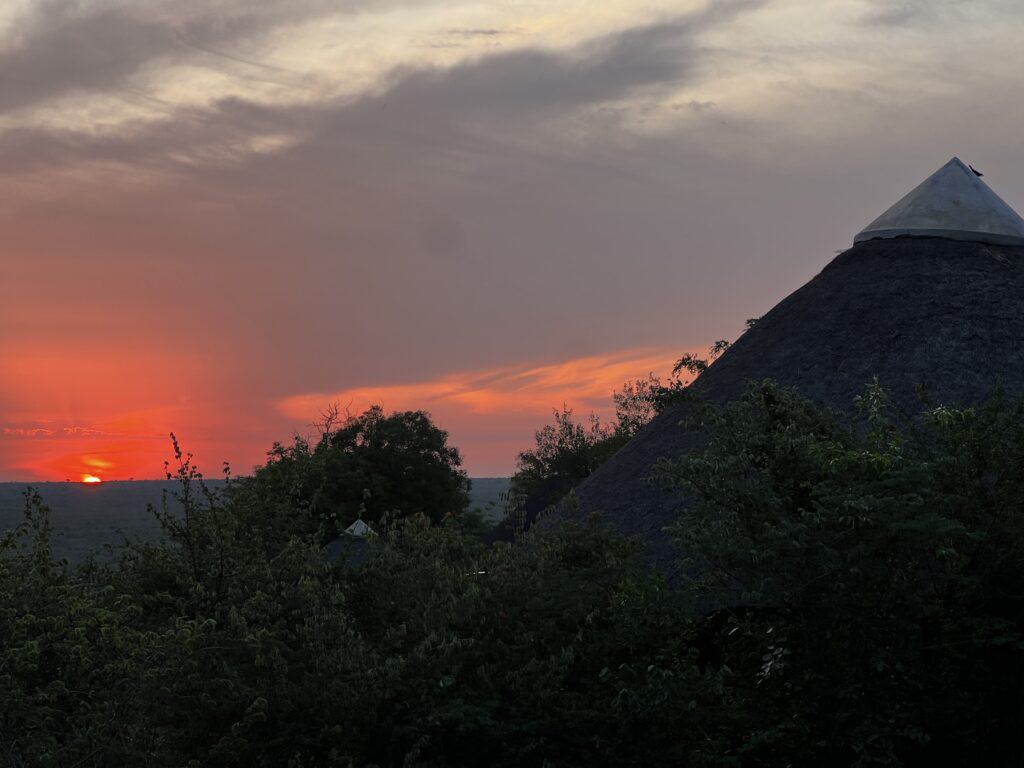
The rondavels at Olifants rest camp in the Kruger National Park
Day 3 in the Kruger National Park
We’re not changing campgrounds today so we’re just out on a leisurely drive around Olifants to see what we can find. After such a big day yesterday — leopards and hyenas are not common to spot, so that was major — today’s drive feels a little slow by comparison.
Everyone told us we’d get sick of seeing impalas and I didn’t believe them, but it’s true.
They’re kinda like little red herrings because you’ll see movement behind a bush and get excited and then boom, just another impala. They’re about as common as squirrels in Canada, so it doesn’t make sense to stop and admire them every time they pop up. Still pretty, though!
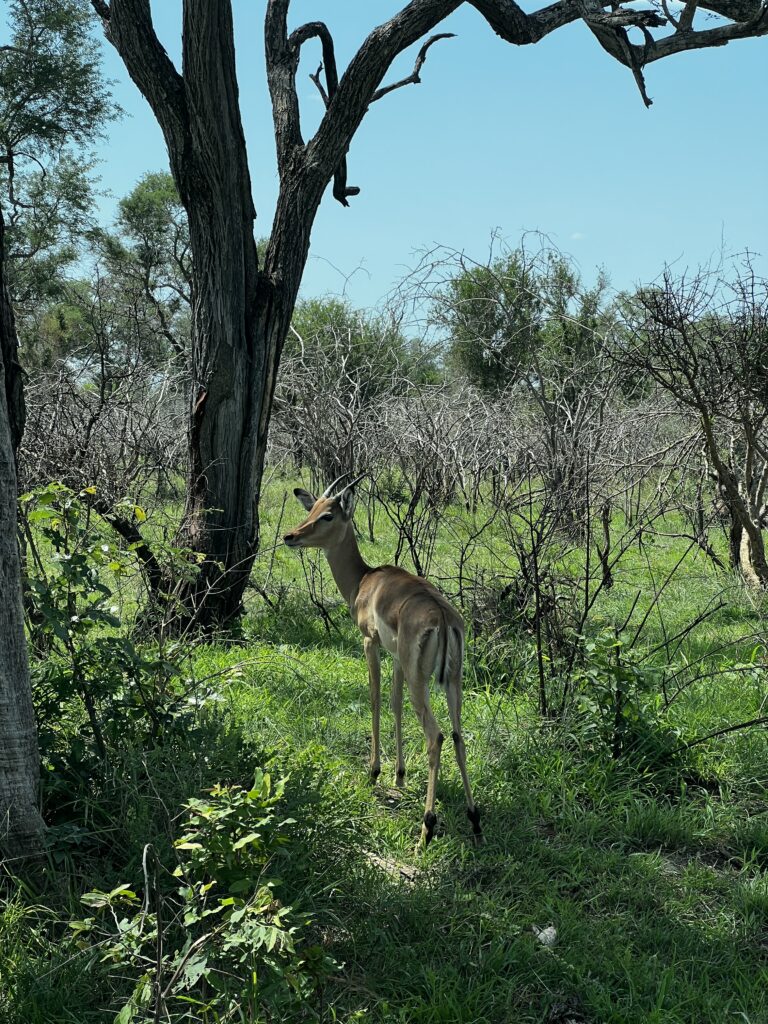
Impala
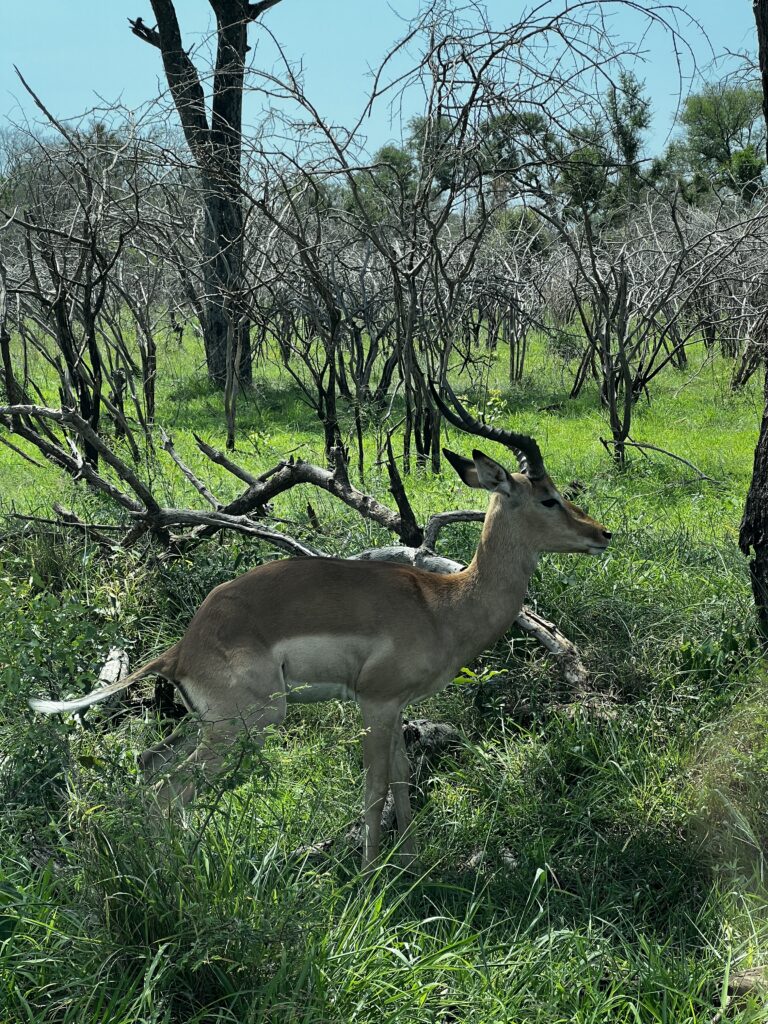
Accidentally took a pic of this one when it was pooping
But today there’s nothing else to spot. We drive and drive and see nothing. After about an hour my eyes are getting tired from all the looking without any reward. I’m wondering if they’re working properly.
Then out of nowhere there’s an elephant right next to my window. He kinda rears up and trumpets what I can only imagine translates to “Hey, don’t do that! You scared me!”
But like, same, dude.
He was having a snack and tucked behind some branches — it’s crazy how camouflage these giants can be. Now he’s kicking up a bit of a fuss and running ahead to tell his friends, I guess. It’s hard to explain, but the animals’ personalities really shine through when you’re watching them; especially the elephants.
We decide this one seems like a boisterous teenager.
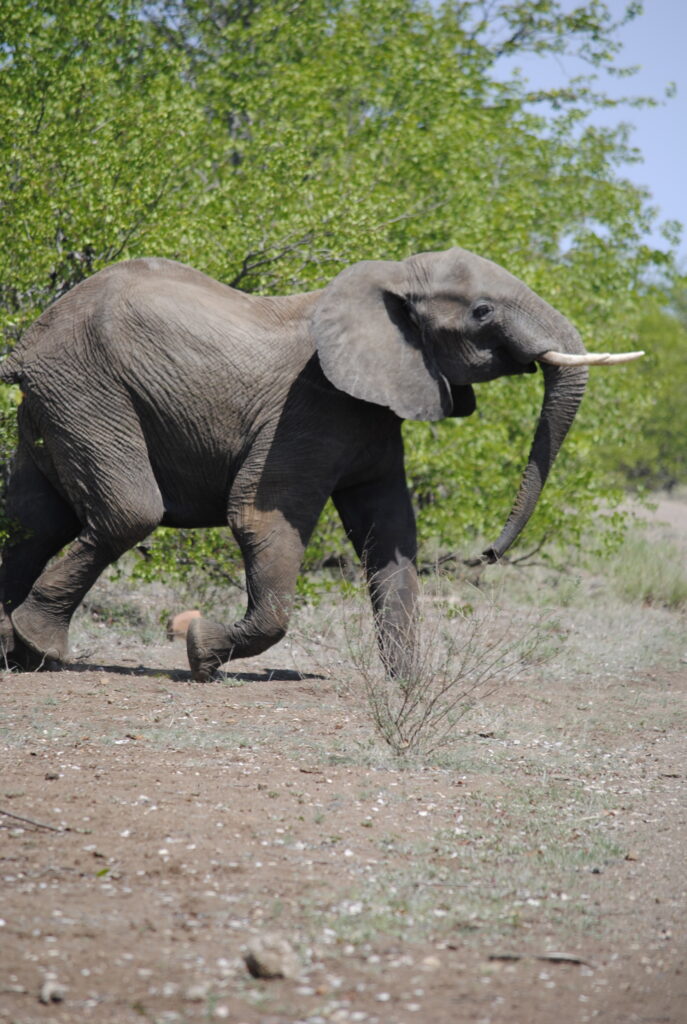
Ahead, there’s a whole family, including a tiny little baby! Like, fresh-out-of-the-womb-(probably)-sized baby.
At this point in time, the animals in the Kruger National Park have all lived their whole lives in proximity to tourists in vehicles (except for maybe a few turtles and crocodiles? I don’t know). They don’t seem at all bothered when we’re sitting next to them on the road taking photos from the car. Even the mama elephant with a newborn baby is like, keeping an eye on us I guess, but still happily snacking away and standing near the street.
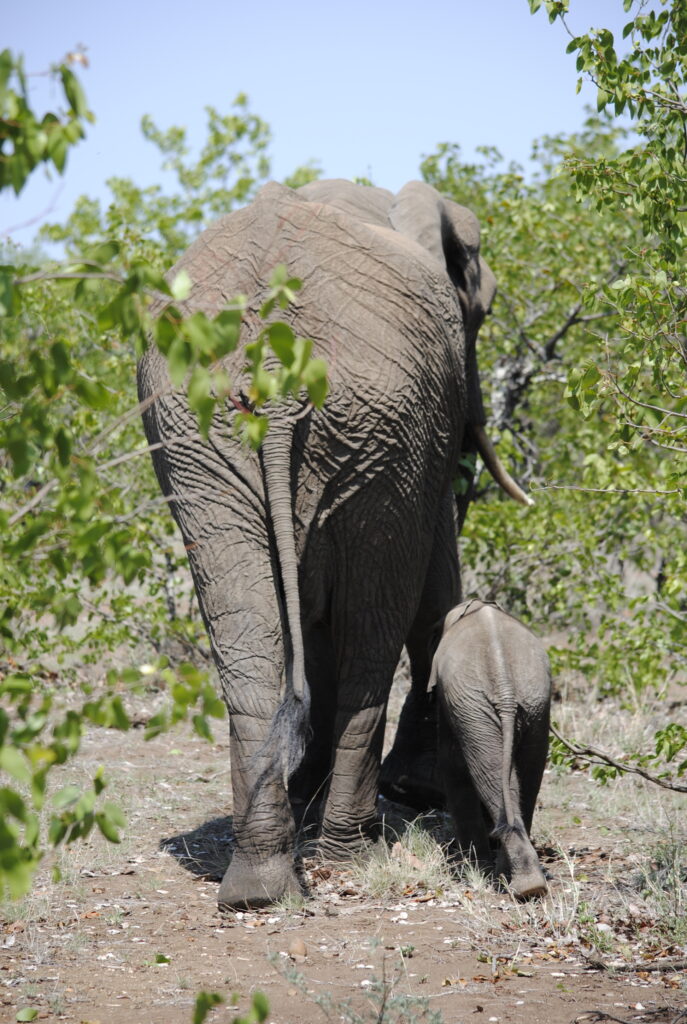
It’s HOT today – 38 degrees. So all the animals seem to be hiding in the shade and aside from the elephants, some giraffes, and 6 million impalas, we don’t see much else. We do also spot a few different types of antelope, known as kudu and water buck, and I think kudus are actually even cooler looking than impalas. There are also some reallllly pretty birds in the park… and I fear I may be turning into my mother. A bird lady.
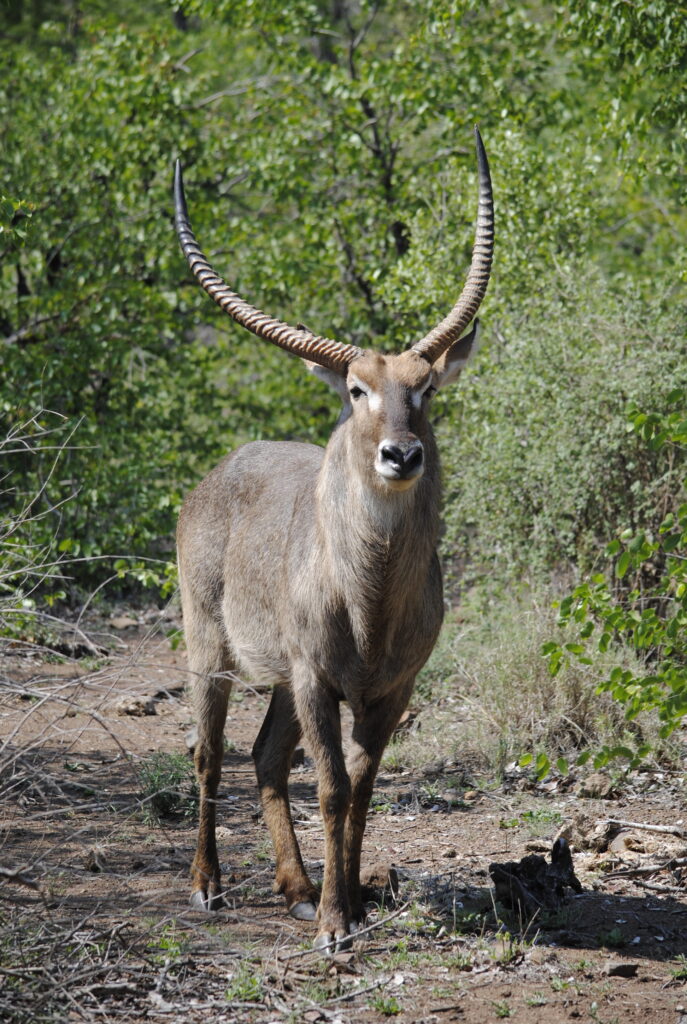
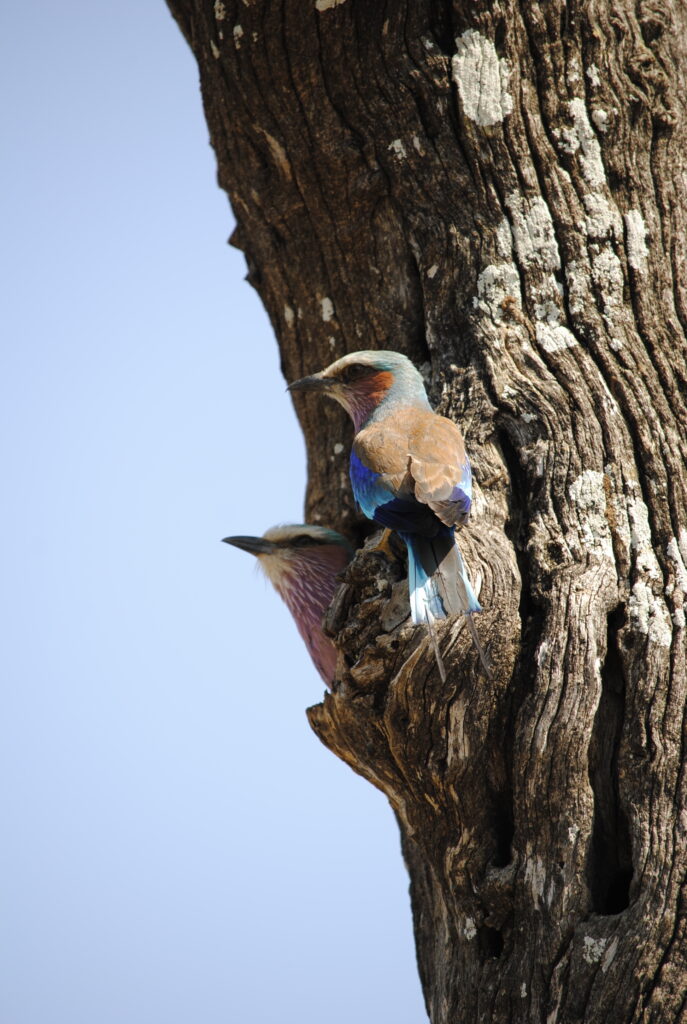
This whole experience is really tapping into my Pokémon trainer roots. I’m not sure if I’m such a collector at heart because of Pokémon, or if I loved Pokémon because being a collector is part of my soul, but either way it’s definitely a thing. I like something I can complete. A good checklist. (Seriously, go see my “most” bucket list.)
Anyway, exploring the Kruger National Park is literally just live-action Pokémon Snap.
There are changing landscapes and regions within the park where you’re more likely to see different animals. They’re all different levels of rarity (impalas = Pidgeys, leopards = Chanseys). You get higher points (in the eyes of your friends and family) for taking good pics.
Feels like one of the Nintendo guys came here a holiday and was like now imagine you could get out walk around, make them fight each other, and trap them (respectfully) to carry them around in your pocket…
The night drive
The campgrounds offer optional excursions you can join, including sunset drives, night drives, and walks at various times of the day. Tonight we’re going on a night drive, which you can’t do on your own because the campground gates close in the evening.
As we’re still visiting on the sort of off-tourist season, it’s just us (the whole fam) and a couple from the Netherlands. We hop into an open safari vehicle. I don’t know the official name but whatever you’re picturing, that’s probably it.
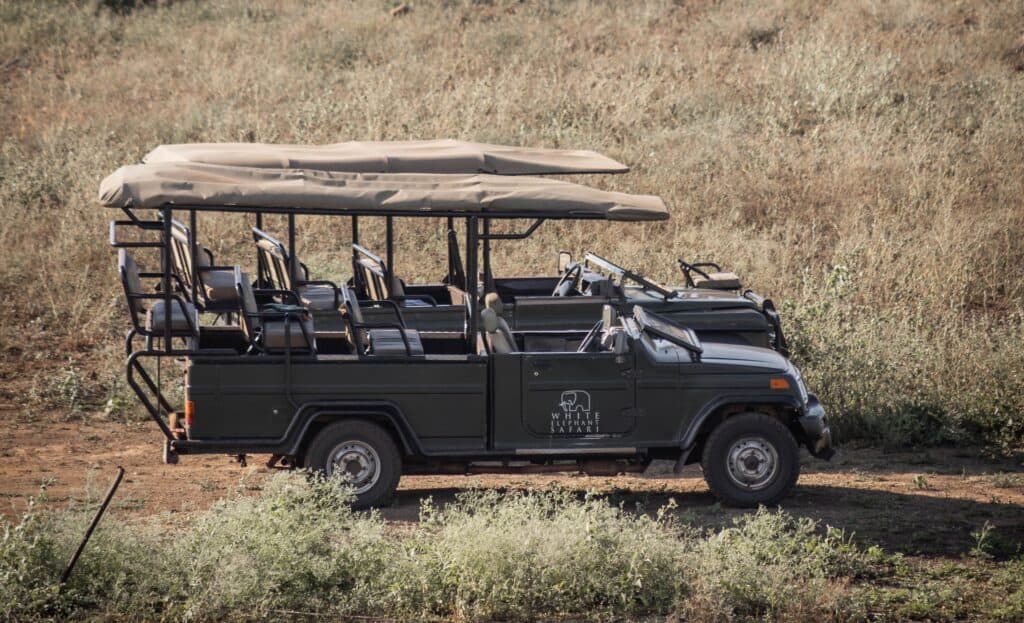
Kinda like this, but this is a stock image.
Our guide seems a little nervous, or at the very least new. She gives us big flashlights we can use on the drive to spot any nocturnal animals — we’re looking for glowing eyes. When we see something, we’re supposed to yell “stop!” and she’ll kick it into reverse. Personally, I think we’re going a little too fast to actually see anything but I’m confident her eyes are more attuned to this type of thing than mine.
But uhhhh it doesn’t appear that they are lol. She never spots anything, and we usually have to yell stop a few times before it actually happens. If we ever saw a leopard I’m not sure yelling would be an effective way to keep it around, but I don’t know what the alternative is.
We see a ton of these *adorable* spring hares, affectionately known as Krugeroos, because they look like mini kangaroos… and live in the Kruger National park. Get it?
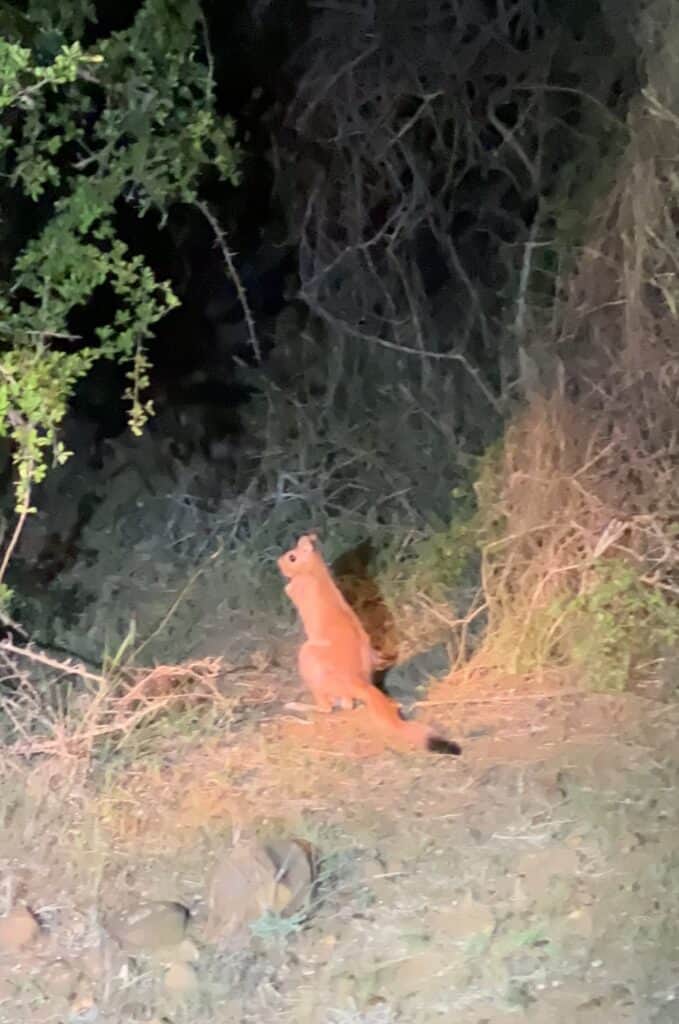
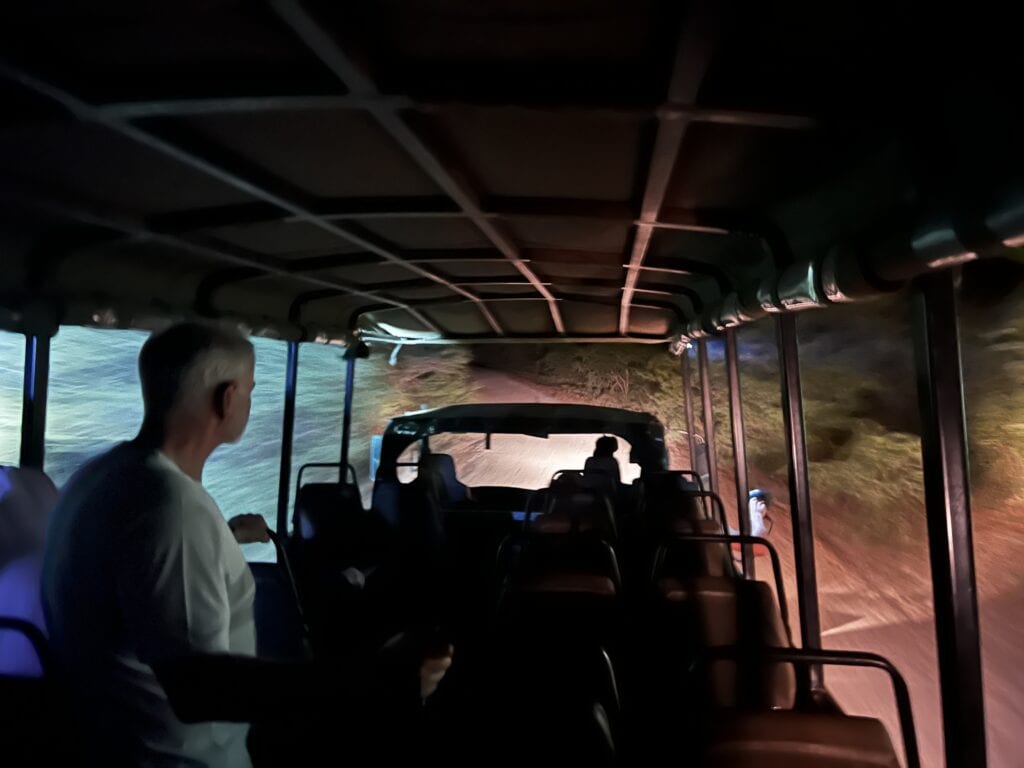
I think I see a hippo’s butt but we’re going so fast and it takes me a moment to process and it’s too late to call out to stop by the time I realize it likely was a hippo. Fortunately we have seen a couple already so it’s not like a life of death situation. I’ve already checked it off my list.
Because I’m holding what’s basically a giant flood light, the moment we stop I get absolutely swarmed by bugs. Big ones. Flying full speed ahead into my face. I want to stop to see the things, but I’m equally afraid to keep my eyes open because I can’t trust these moths to stay in their lanes.
Our guide takes us down to this low bridge where we spot an elephant, a very active crocodile, some water buck, and a brave hyena who walks directly up to our vehicle. He looks like he’s just survived a fight with a lion, as his fur has patches of dried blood on it, and he’s limping a little. But he seems like he’ll make a full recovery, and just saunters past us, completely unbothered.


At the beginning of the tour the guide had also promised to take us to the high bridge, but it doesn’t happen. She chooses a weird time and way to explain this. She’s like, “Unfortunately, time was not on our side,” and then parks the car for about 10 minutes so we can look at the stars. ???? Again, I think she’s just new and hasn’t figured out the time management thing yet.
Obviously, the hyena encounter was epic, so I’m not too torn up about the high bridge. The sighting was even worth putting up with every bug that got in my hair and mouth.
This is A LOT to read, I know. I’m not a concise kinda gal. Stay tuned for days 4-6 in the Kruger National Park in an upcoming post.
See all my posts about South Africa here!

